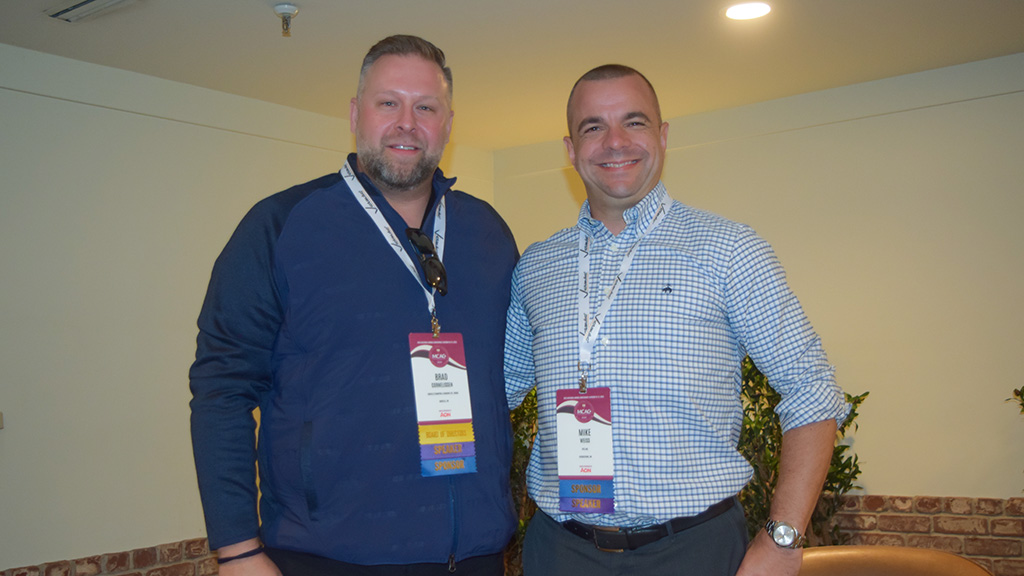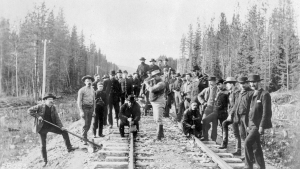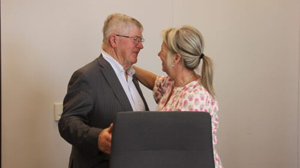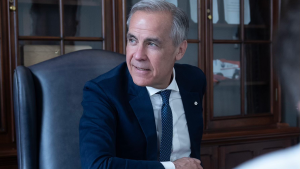The worst is over for the supply chain disruptions that beset the construction sector during the pandemic.
But as delegates attending the Mechanical Contractors Association of Canada (MCAC) conference in Napa, Calif. heard, there are still numerous strains on the system to contend with old and new.
MCAC COO Ken Lancastle hosted a wide-ranging panel discussion Oct. 19 billed as Nearshoring and Inflation: How Supply Chains have Changed and What it Means for Contractors. The panellists were two mechanical sector suppliers: Brad Cornelissen, CEO of Oakville Stamping & Bending, a manufacturer and distributor of plumbing products; and Mike Weiss, national sales manager of mechanical products at IPEX Inc., which designs and manufactures piping products.
Cornelissen and Weiss agreed supply chains have improved and are close to “quote unquote normal,” as Weiss said.
But it is not business as before they said – chastened suppliers are looking to a variety of alternative strategies such as nearshoring, securing dual suppliers and spurning volatile regions to ensure there’s no repeat of the pandemic era chaos.
“We did learn a lot from COVID,” said Cornelissen. “Having overseas manufacturing is a challenge and a simple breakdown in freight lines…is massively disruptive to how we’re able to support our customer base right across America.”
Weiss and Cornelissen differed, though, on the merits of broad adoption of nearshoring. Weiss said if the establishment of more North America-based suppliers meant a major escalation in costs, many mechanical contractors would not buy in.
“I think nearshoring is a lovely concept,” Weiss said. “I don’t see it becoming widespread. I just think the cost of manufacturing, having all these things closer to home, increases the cost of doing it. So, it’s nice to talk about, I’m just not sure it’s going to happen on a wide scale.”
Asked by Lancastle what is keeping them up at night, Cornelissen said it was general economic uncertainty, with the unknown future path of interest rates a continuing concern, and Weiss said workforce stability.
“It’s macro economics,” explained Cornelissen. “I think we’re heading into unknown territory.
“I want that feeling of uncertainty to go away. I want to feel confident that I can see ahead.”
With interest rates, he said, it’s not only high rates that’s a problem, it’s also not knowing where they are heading. The health of the residential construction sector affects the mechanical sector and right now homebuilding is slow, he said.
The weakness expected for the housing sector in 2024 is already here, Cornelissen argued, based on conversations he has had with many colleagues.
“I think we still have some room to drop this year for housing starts and obviously that has an impact on commercial, institutional, all the spending,” said Cornelissen.
Weiss identified several issues that hinder developing a stable and growing workforce. The construction sector fails to convey the job satisfaction, the passion, that building creates within its workers, he said; a culture must be developed where workers in the sector become ambassadors.
In addition, he said, hybrid working is a losing proposition.
Weiss remarked, “They’re not in the office feeling the hustle and bustle. They’re not working on teams physically.
“I understand why they want to do that. And I hear them, but they miss out on that culture part and that’s the part that makes it easy to jump around (quit their jobs easily).”
The panellists also raised the “brain drain” of experienced older workers who are retiring, poor succession planning and the slow evolution of coherent ESG policies in the sector as other workforce problems.
Weiss and Cornelissen also highlighted paths to success, such as suppliers and buyers committing to communicating better to identify each others’ needs.
Innovation most often comes from dialogue, the panellists said.
Supply chain disruptions during the pandemic led to greater collaboration to address problems – everyone benefits from transparent discussions of the need for longer lead times for orders and potential price increases, said Weiss.
“The more that we connect, the better it’s going to be for the industry to make sure that we’re filling the needs that you guys have,” he said.
Follow the author on Twitter @DonWall_DCN.










Recent Comments